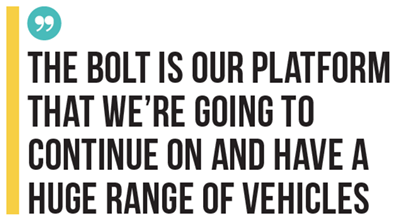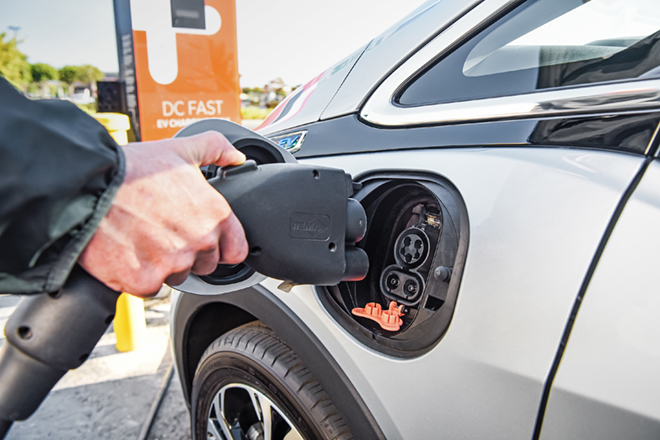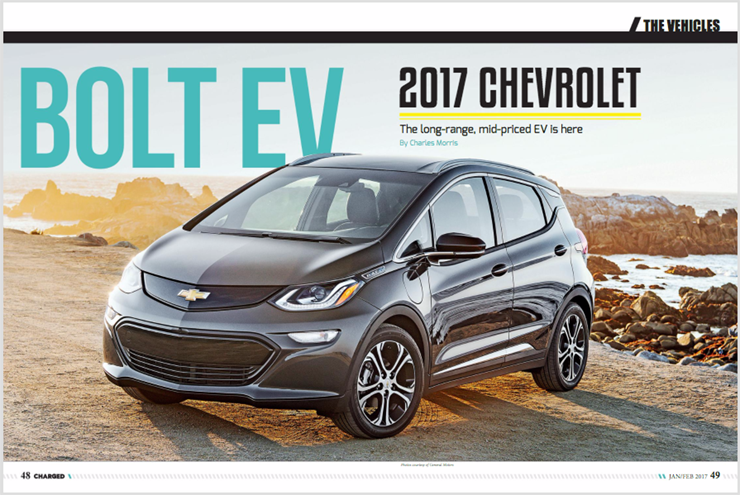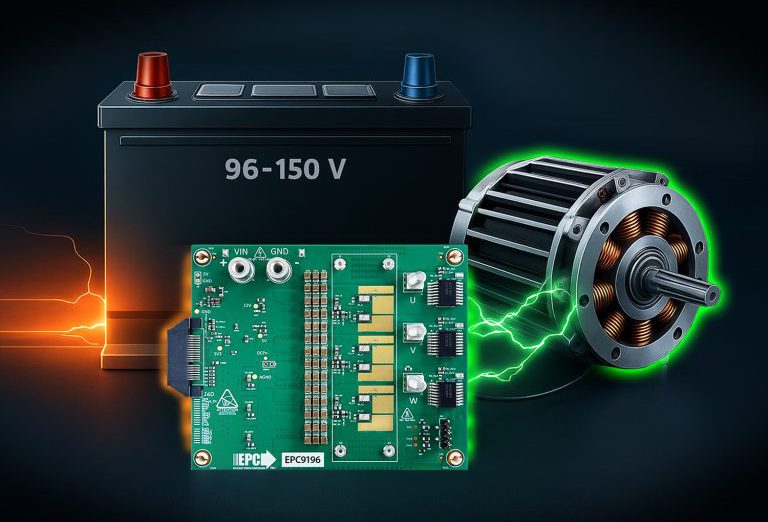The 2017 Chevrolet Bolt EV will surely be remembered as a milestone model in automotive history – and hopefully for more than just the hype that heralded it. For several years, the punditocracy has been saying that the “killer app” that would bring electromobility to a “tipping point” and build that all-important “critical mass” would be an EV with a range of over 200 miles, at a price point in the $30k range.
Well, here it is, and it’s arriving at a most propitious time – EV sales are in a steady growth pattern around the world, and GM is the only company with a “200 for 37” EV on the lots. Tesla’s Model 3 is still months away (and considering the backlog of orders, years away if you’re placing an order today). Other competitors are even further behind: Nissan, BMW and Ford are all overdue to update their EVs, which are looking pokey down in the 100-mile range, but none has announced any details of the next generation.
Possibility and reality
The stars are aligned for the Bolt to be a big seller, and indeed it made a strong start, moving 579 units in December, its first month on the market, and another 1,162 in January. However, the auto business doesn’t operate on an “if you build it, they will come” basis. Automakers rely heavily on advertising – according to a report issued by Global Equities Research last July, they spent an average of $1,000 per vehicle sold in the US market in 2015. When it comes to EVs, that figure is much closer to zero. It’s an open secret that automakers do little or no marketing for their plug-in vehicles, and GM is no exception.

This is (probably) not the result of some irrational hatred of electricity, but rather a sound short-term business decision. Thanks to still-high battery prices, OEMs’ profit margins on EVs (with the exception of Tesla) are meager, or even negative. The Detroit News estimated in November that GM will lose up to $9,000 on every Bolt it sells, noting that this “sounds crazy, but…makes perfect business sense,” as it allows the company to earn ZEV credits from state regulators, and subsidize its profitable portfolio of ICE vehicles.
JP Morgan analyst Ryan Brinkman, who met with GM CFO Chuck Stevens in December, wrote that the Bolt is part of an “improving array of electric vehicles from automakers which are pricing such vehicles with the aim not to turn a profit but rather to sell in sufficient volume from a regulatory compliance perspective.”
So, realistically speaking, those who were expecting the Bolt to break into the mass market are probably bound for disappointment. To the best of our knowledge, GM has no plans for any substantial ad campaign, and production for the first year will probably be limited (some observers have thrown out the speculative figure of 30,000 units).

All that said, there is still every reason to welcome the Bolt as a historic step forward, and to applaud GM for building it. The plucky new EV may not be a profit center today, but it’s a serious investment in the future. GM has plans to use the technology it developed for the Bolt for several future EVs. “The Bolt is our platform that we’re going to continue on and have a huge range of vehicles,” CEO Mary Barra said at the recent Detroit auto show. “We haven’t announced them yet, but you’re going to see more coming.”
As battery prices fall, and consumer awareness of EVs grows, that loss-per-vehicle figure will shrink – sooner or later the Bolt or a successor vehicle will become a profitable proposition, and GM’s steady progress in electric drive tech is bringing that glad day closer. It’s also worth mentioning that GM is by far the most charged of US automakers, surpassing Ford’s halting efforts, to say nothing of Chrysler’s kicking and screaming.

Evolution of an EV
The Bolt is the product of a long learning process at GM. The lessons learned about batteries, motors, controls and other EV tech from the Volt, Cadillac ELR and Spark EV enabled GM to make a major step change in electric specs for the Bolt.
“One of the top priorities of our team during development of the Chevrolet Bolt EV was affordability,” Bolt Chief Engineer Josh Tavel told Charged. “We wanted to provide our customers with the best value in a long-range EV. That meant we had to leverage the more than a decade of experience that we’ve gained from the first- and second-generation Volt as well as the Spark EV.”
“For example, the basic motor design for the Bolt EV is pretty similar to the motors used in the Volt and Spark EV,” Tavel continued. “That enabled us to reduce motor development cost and time. The same can be said for the overall drive system. The software used to control the charging system and battery management system is also based off the technology used in the Volt and Spark EV.”
“On the battery, our experience enabled us to work with our cell supplier, LG Chem, to develop a chemistry that’s more energy-dense, which enabled us to use less active material, resulting in a lower cell cost. We also optimized the pack design to make the battery system a fundamental part of the overall structure of the vehicle, which helped to reduce costs as well.”
While GM’s overall EVolution may have been long, the development of the Bolt occurred on something of a rushed schedule. “[The team] has done a phenomenal job,” Tavel told us. “They took the challenge just a few short years ago to do the car in an accelerated timeline, but get over 200 miles of range. They blew by that number with 238.”

Global cooperation
Is the Bolt an American vehicle, or a Korean one? It’s both, as well as a perfect illustration of how the auto industry (like much else in the modern world) is a cooperative enterprise among many nations. GM and LG Chem have long had a close partnership – the Korean firm has supplied lithium-ion cells, which it builds at its plant in Holland, Michigan, for all of GM’s plug-in vehicles. For the Bolt program, however, the two companies formed a partnership that GM North America President Mark Reuss called “unprecedented,” and “a different kind of OEM-supplier relationship.”
Developing the Bolt “was a true collaborative effort from the beginning,” said Reuss, “one that set aside the traditional model of product development.” Development teams from both companies worked in both nations, and components are being manufactured in the US, South Korea and other countries as well. LG Electronics is investing more than $250 million in a Korean facility to manufacture the Bolt’s motor and other parts.
GM designed the motor, and was involved in the design of most of the other components. It tested and validated all parts and integrated the powertrain into the vehicle. However, almost every major electrical component that goes into the Bolt is being built by one or another division of the giant LG conglomerate.
LG companies supply all the major powertrain components, including the motor, inverter and onboard charger, as well as the HVAC system, the instrument cluster and infotainment system, and even the OnStar telematics system.

“We have the capability as a company, obviously, to make all of these components ourselves,” Reuss said. However, GM chose to take advantage of LG’s expertise and scale in manufacturing, as well as its flexibility in responding to new developments in EV tech. “Some people assume that cost is first and foremost, but that’s not the only driver,” Reuss continued. “This is a space where technology and new ideas are fostered on a very regular basis.”
In early 2015, Dr. Prabhakar Patil, CEO of LG Chem Power at the time, explained to Charged that the company was committed to helping the new EV market succeed. The battery manufacturer has the potential to become a titan in a robust EV industry and it’s willing to sacrifice short-term profit margins to make that happen. “We also recognize that battery costs have to keep coming down in order for this technology to become mainstream,” said Patil. “We can’t take what I would call a self-centered kind of perspective that says, ‘I have to have my margins, therefore it’s better for me to have a higher battery price.’ We have to realize that the name of the game, at this point, is growing the volume of vehicles. And the only way that’s going to grow is if customers see a value equation that makes sense to them. So, we will do whatever we can to go down that cost curve as fast as possible.”
Last fall, however, the two cozy companies had a lover’s tiff when GM revealed its battery cell costs to the press, apparently without LG Chem’s knowledge. The automaker announced that the Bolt’s battery cost would be $145/kWh, a hundred bucks or so cheaper than what others were paying at the time. As South Korea’s E-Today reported, “LG Chem is ticked off, because now all of LG Chem’s other customers are going to be asking for the price.”
Sporty and state-of-the-art
Bolt Chief Engineer Josh Tavel is a race driver himself, and is keenly aware of the fact that performance can be a strong selling point for an EV. He set out to build a car with handling comparable to the best models in its price range, and by all accounts, he succeeded (see First Drives, below).
Almost all EVs are amazingly quick off the line, as many a surprised muscle-car driver has learned in a friendly stoplight drag race. However, between 30 and 60 mph, they tend to lag. Not the Bolt – it gets to 60 in 6.5 seconds. That’s hardly Tesla territory, but it smokes the Nissan LEAF’s 10.4 seconds.
As do various other EVs, the Bolt has two selectable regenerative braking modes. Low mode gives you strong regen, enabling one-pedal driving. In Drive mode, the Bolt coasts like an old-fashioned car. As in the Volt and the ELR, there’s a steering wheel paddle that can be used to manually engage regenerative braking. Using these features can extend range a little bit and, as an added bonus, reduce wear on your brake pads.
A large multifunction display is de rigueur for modern cars (and everywhere else in our lives, it seems), and the Bolt has the latest and greatest (provided by LG, of course). The 10.2-inch touch screen displays energy consumption data and the usual climate, audio and phone functions. Another 8-inch screen serves as the instrument cluster. Both screens are customizable to a certain extent. Apple CarPlay and Android Auto compatibility comes built in.
All the latest connectivity and infotainment features are here, with a couple of handy innovations. The driver’s saved preferences (climate, audio, etc.) are associated not with a particular key fob, but with a paired phone. The Bolt can be programmed to sense the phone approaching (via Bluetooth) and automatically unlock itself.
Safety features are likewise plentiful. Ten airbags are standard, and high-tech functions such as Forward Collision Alert, Lane Departure Warning and Low-Speed Forward Automatic Braking are available as options.
An optional rearview camera provides a view of the road behind, even when driving forward. It’s built into the traditional rearview mirror, and a familiar lever switches between camera display and mirror. The camera provides a wider view than the mirror, and it can be handy if the mirror’s view is obscured by rowdy backseat passengers or cargo.

The cure for range anxiety
Like Tesla’s vehicles and BMW’s i3, the Bolt is a native EV – it was designed around its large 60 kWh battery pack, which forms much of the floor. This has two advantages: it places the car’s center of gravity close to the ground and between the axles, which greatly improves handling; and it opens up the interior, allowing for a much roomier cabin that can be configured with the needs of passengers and cargo in mind.
Unlike EV-makers such as Tesla, with its Supercharger network, and Nissan and BMW, which have cooperated with EVgo to roll out DC fast chargers across the country, GM hasn’t focused on supporting public charging infrastructure. The company hasn’t announced any new infrastructure projects to coincide with the Bolt’s debut.
There’s no doubt that, for the first generation of EVs, a rapidly growing public charging infrastructure was a critical selling point that assuaged buyers’ range anxiety. However, there’s a good argument to be made that, for a vehicle with over 200 miles of range, this is much less of an issue.
“We’re not working on [infrastructure] right now because the range is so darn good, this can be a primary car without a lot of charging stations,” said Mark Reuss. “We’re working on the battery technology to get the range competitive with a regular car, and we’re really almost there. So that’s where our focus is right now. There’s a lot of charging stations happening right now and we’re going to let that happen, but we’re focused on making a car that can be anybody’s primary car.”
When can you get one?
As of press time, the Bolt is showing up at dealers in California, Oregon, Massachusetts, Maryland, and Virginia. According to GM’s official timetable, it will be available in all 50 states by September. However, buyers around the country have reported that, as is usually the case with plug-in vehicles, many local dealers don’t seem to be very informed about availability.

The Bolt is sold in Europe as the Opel Ampera-e. It went on sale in Norway in December. GM’s staggered launch plan for Europe will give priority to “the markets that have an existing EV infrastructure in place and/or have shown the greatest ambition to populate their streets with electrically-powered vehicles.” Germany, the Netherlands, France and Switzerland will get the Bolt this spring, and “most other European countries will follow in late 2017 or during 2018.”
There are two trim levels: The LT model starts at $37,495. The Premier model, which starts at $41,780, adds leather, heated seats, roof rails, a 360-degree-view camera system, a rearview camera, rear parking sensors and blind-spot monitoring. The optional Infotainment package ($485) includes a Bose 7-speaker stereo, wireless phone charging, and two USB ports in the rear. The Driver Confidence II package ($495) adds intelligent features such as Forward Collision Alert, Lane Keep Assist and IntelliBeam headlamps.
The Bolt is of course eligible for the $7,500 federal tax credit.
This article originally appeared in Charged Issue 29 – January/February 2017 – Subscribe now.



















































































